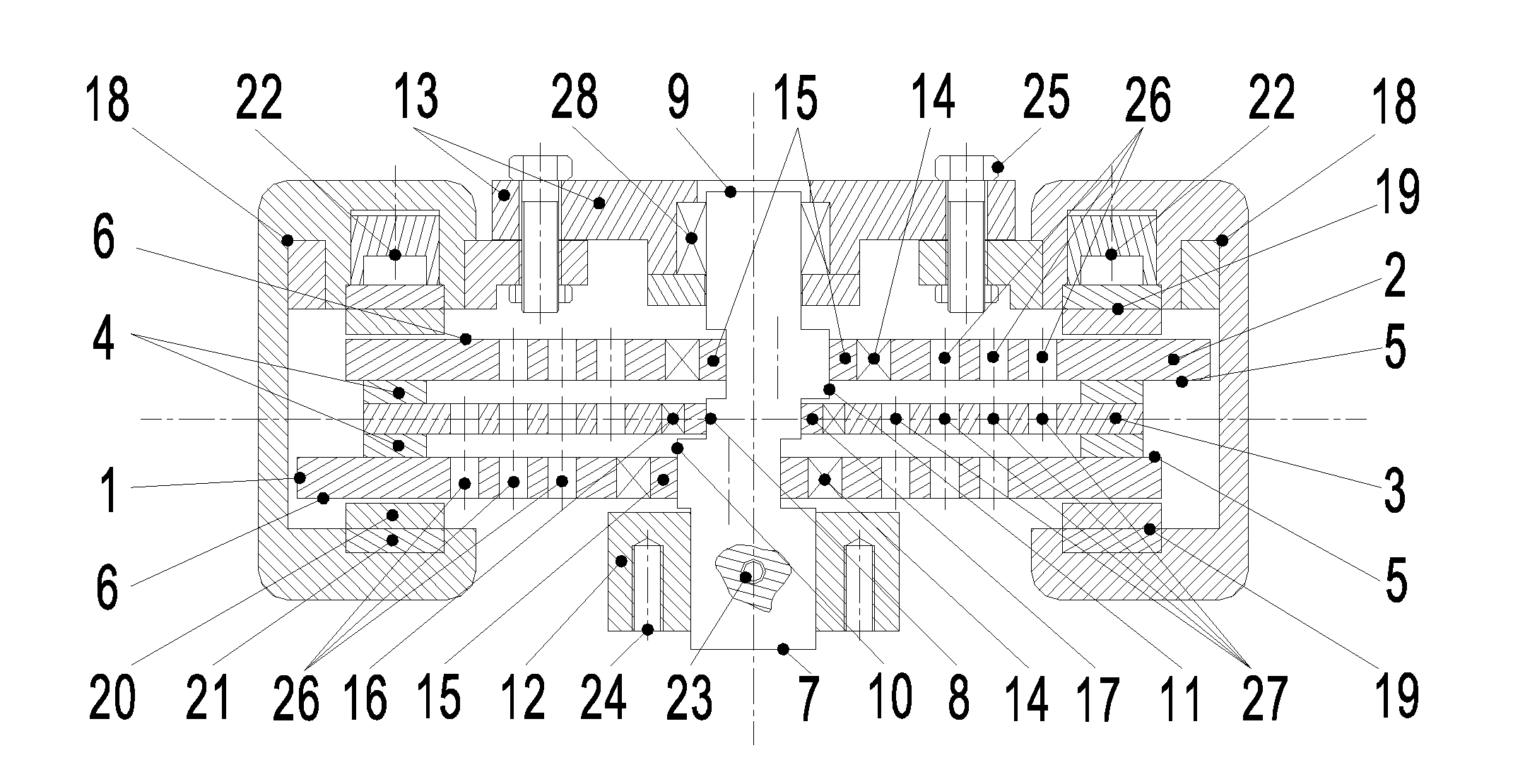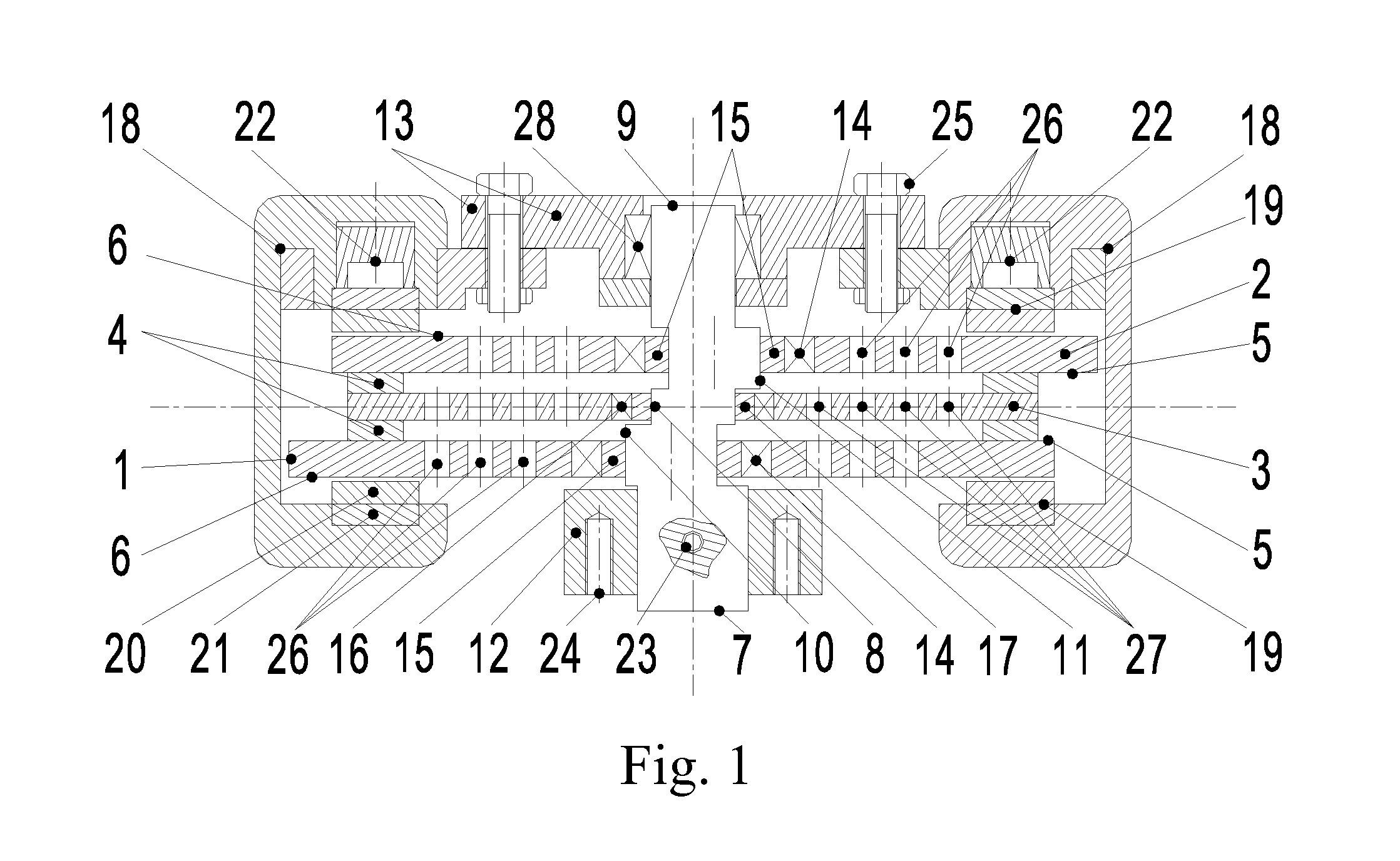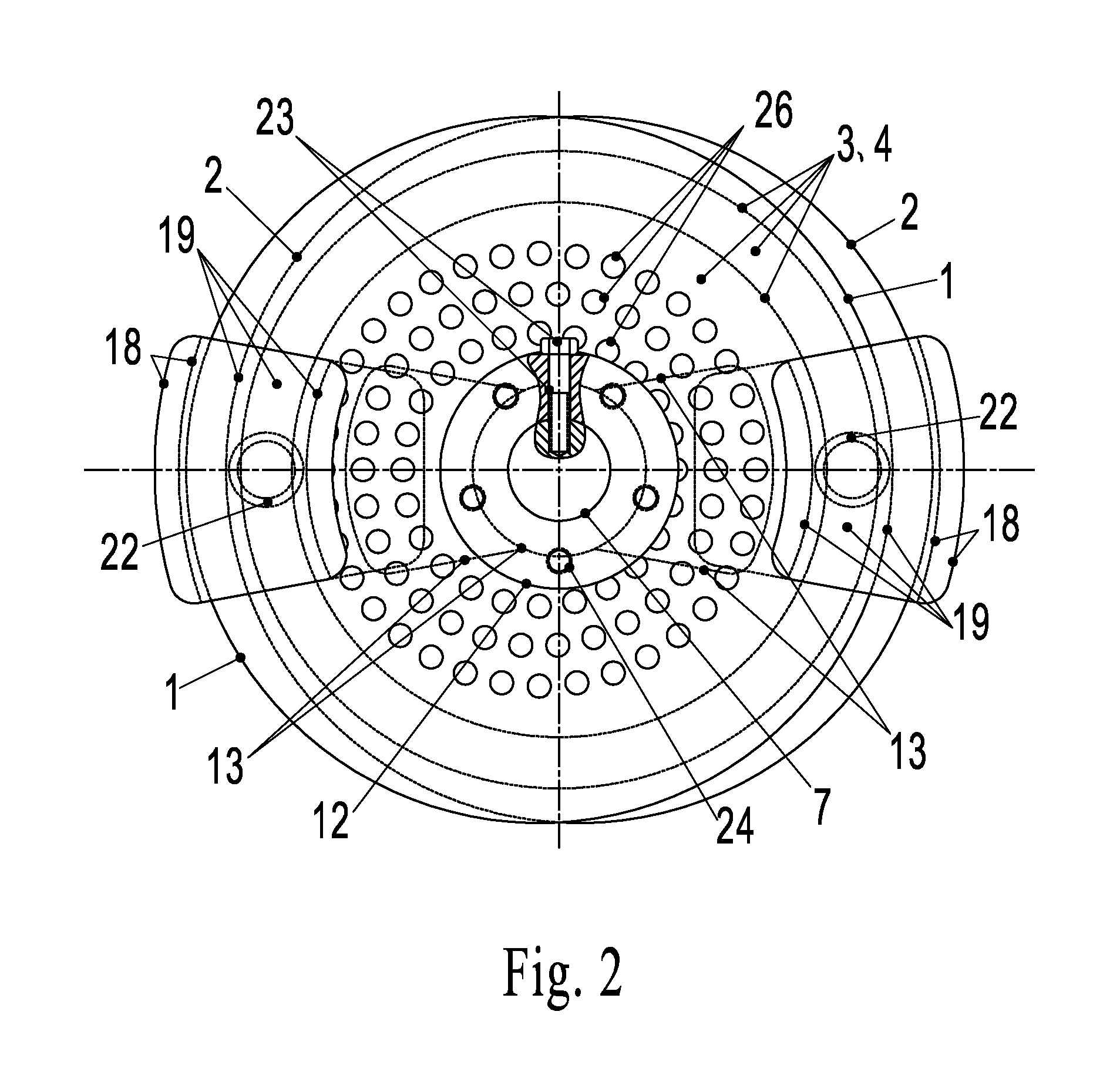Dual-directions braking method of disc brake, braking mechanism and application thereof
a disc brake and braking mechanism technology, applied in the direction of fluid actuated brakes, aircraft braking arrangements, braking elements, etc., can solve the problems of shortening the service life, not completely desirable economic techniques of japanese cars, and the traffic of the road where the tires of automobile wheels are adhered is the most complicated and volatile, so as to increase, decrease or maintain the operation pressure, the effect of rapid entry
- Summary
- Abstract
- Description
- Claims
- Application Information
AI Technical Summary
Benefits of technology
Problems solved by technology
Method used
Image
Examples
Embodiment Construction
[0036]In order to facilitate specifically applying and understanding a dual-directions braking method, a dual-direction braking mechanism and applications thereof of the present invention, the drawings showing structural components in the preferred embodiment for automobiles of the present invention are first briefly illustrated as follows.
[0037]Referring to FIG. 1, according to a preferred embodiment of the present invention, illustrations about a top axial sectional view of a dual-directions braking mechanism (at a non-operational recovery state) are as follows.
[0038]A crankshaft comprises: a first main section 7, a second main section 8 and a third main section 9; and two eccentric sections 10 and 11 mutually disposed at 180°. Two identical friction discs 1 and 2 are respectively provided on the two eccentric sections 10 and 11. Each of the two friction discs has an inner surface 5 and an outer surface 6. A friction disc ring 3 is mounted on the second main section 8. Two symmetr...
PUM
 Login to View More
Login to View More Abstract
Description
Claims
Application Information
 Login to View More
Login to View More - R&D
- Intellectual Property
- Life Sciences
- Materials
- Tech Scout
- Unparalleled Data Quality
- Higher Quality Content
- 60% Fewer Hallucinations
Browse by: Latest US Patents, China's latest patents, Technical Efficacy Thesaurus, Application Domain, Technology Topic, Popular Technical Reports.
© 2025 PatSnap. All rights reserved.Legal|Privacy policy|Modern Slavery Act Transparency Statement|Sitemap|About US| Contact US: help@patsnap.com



